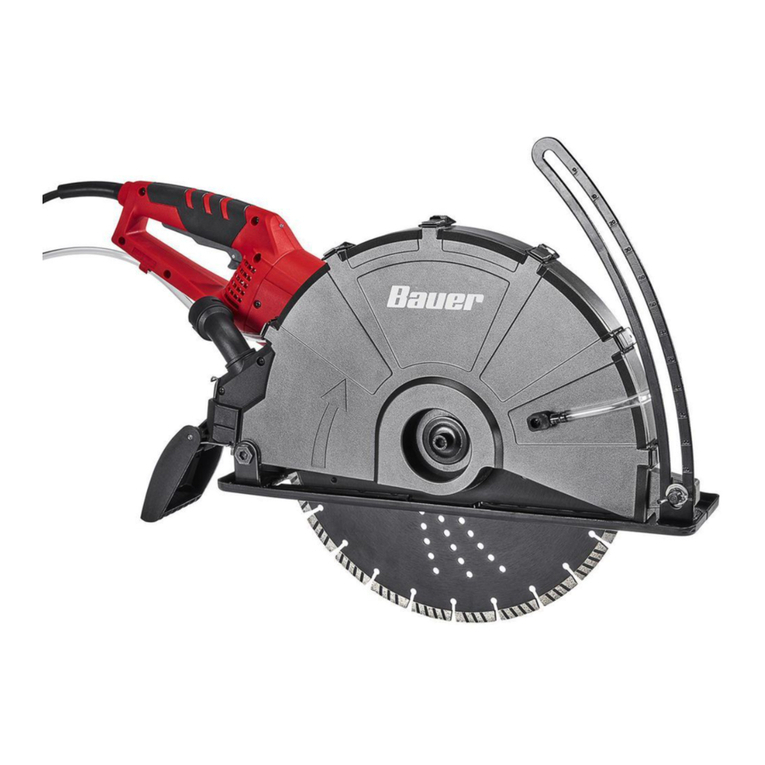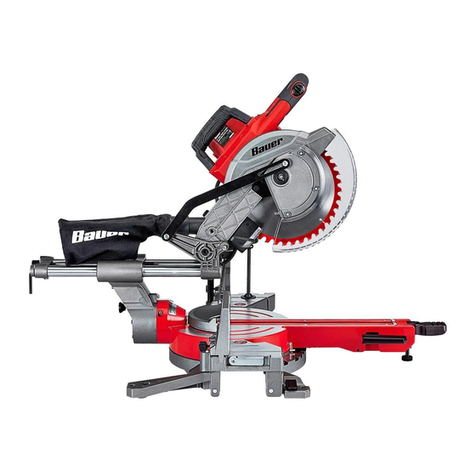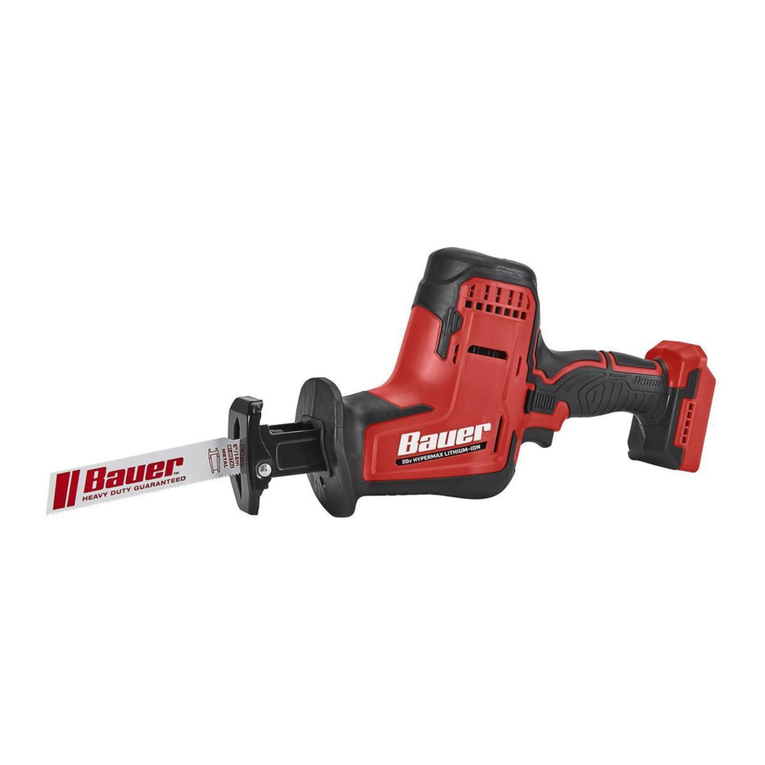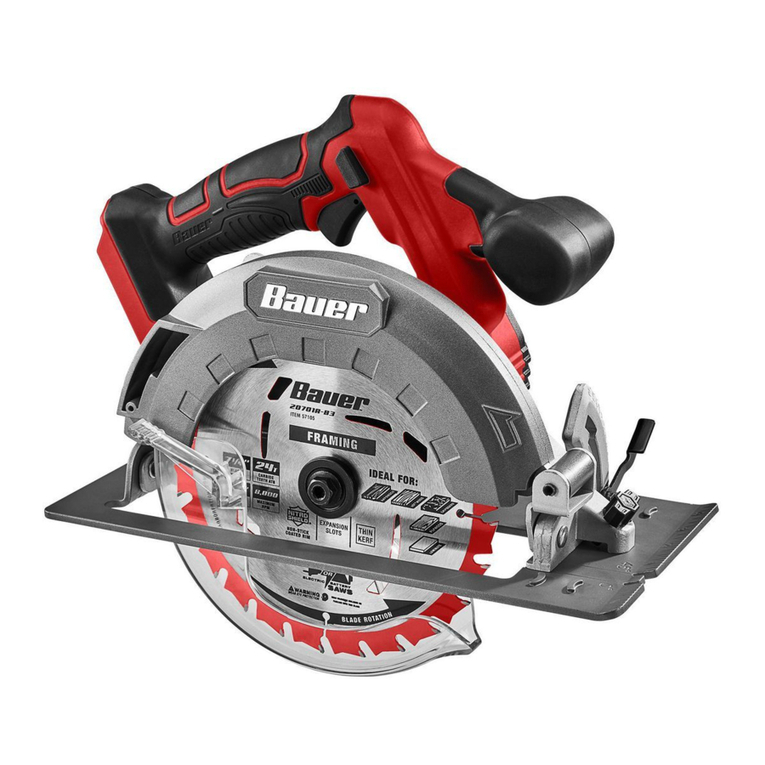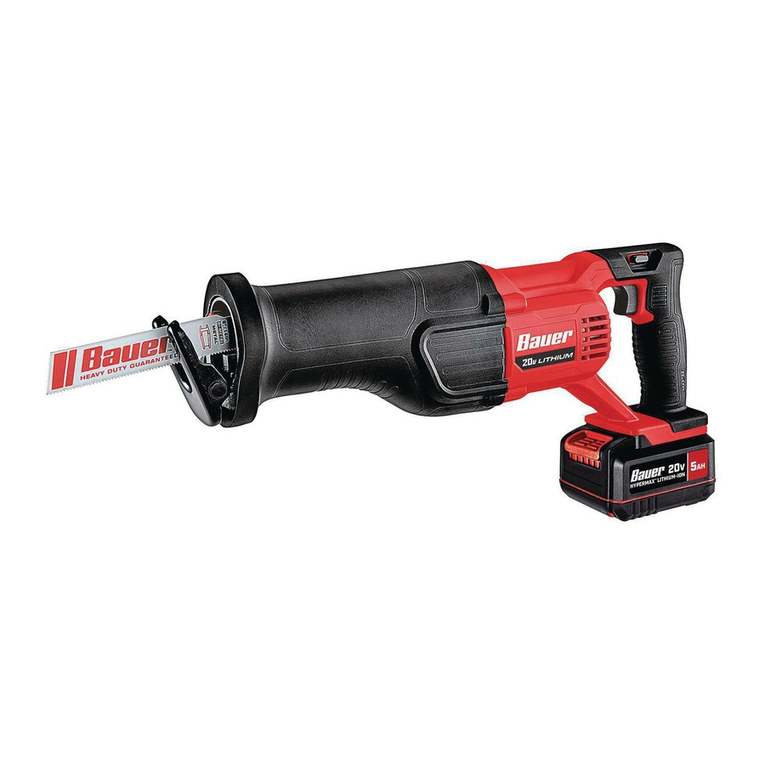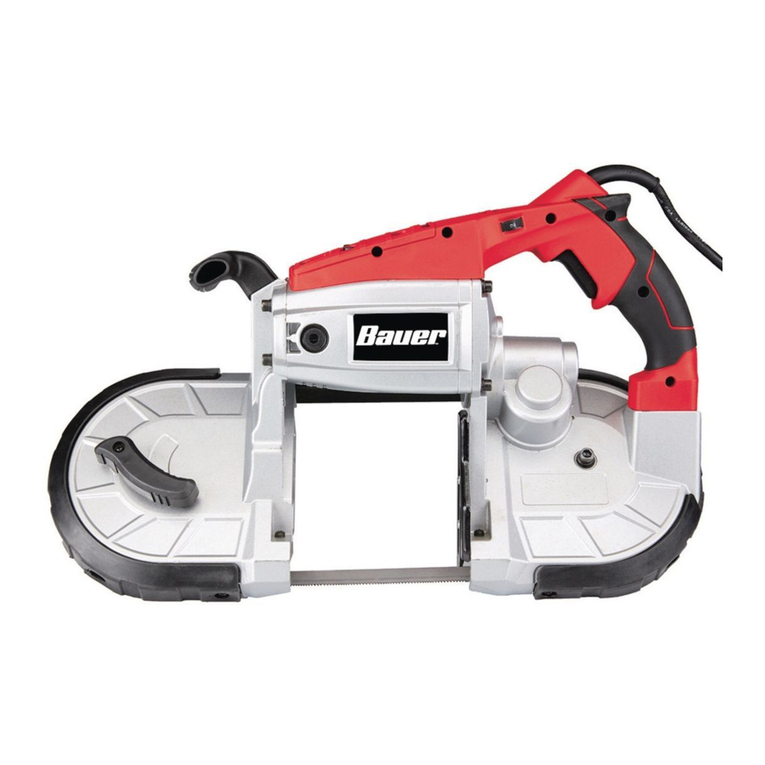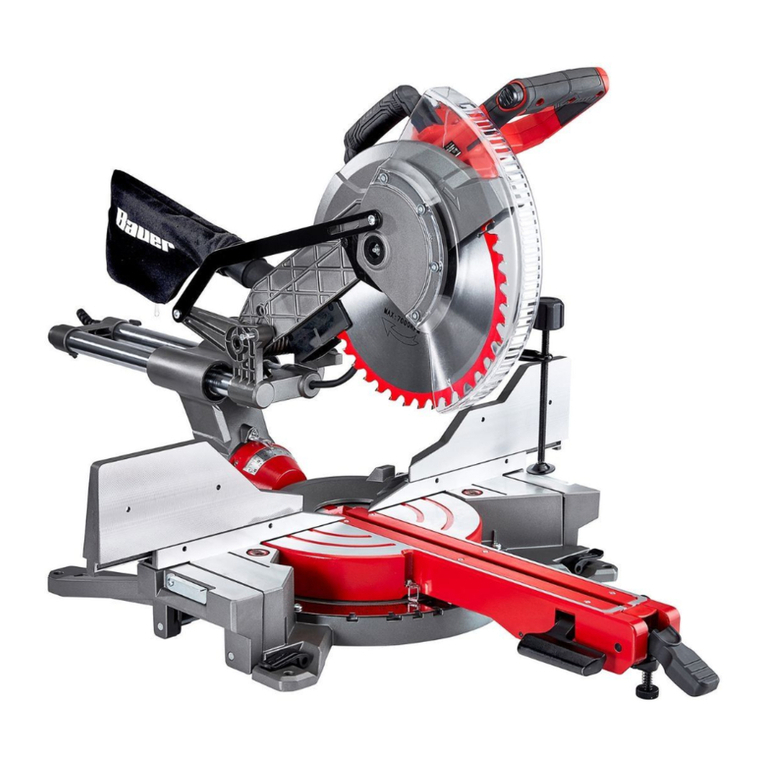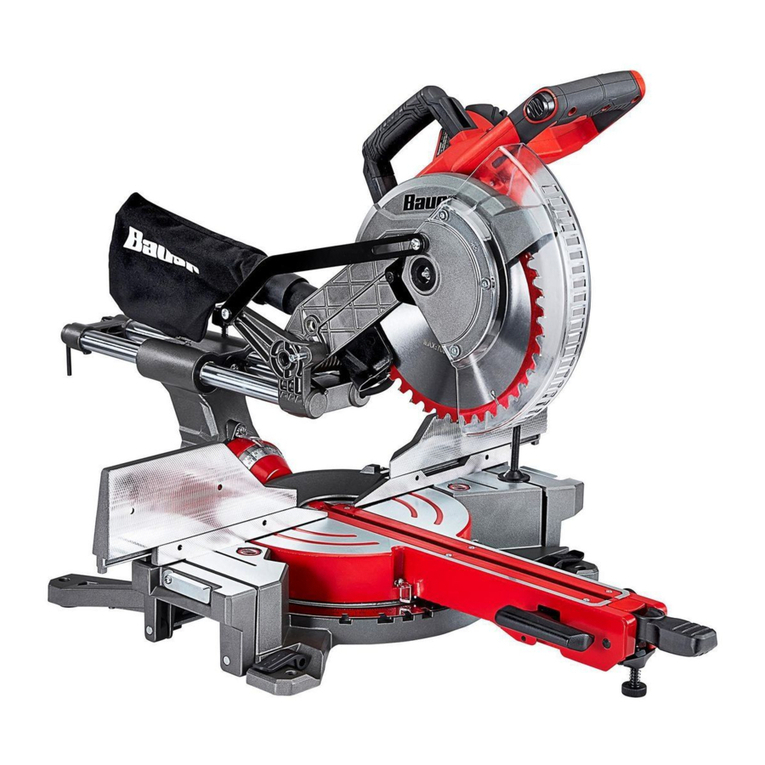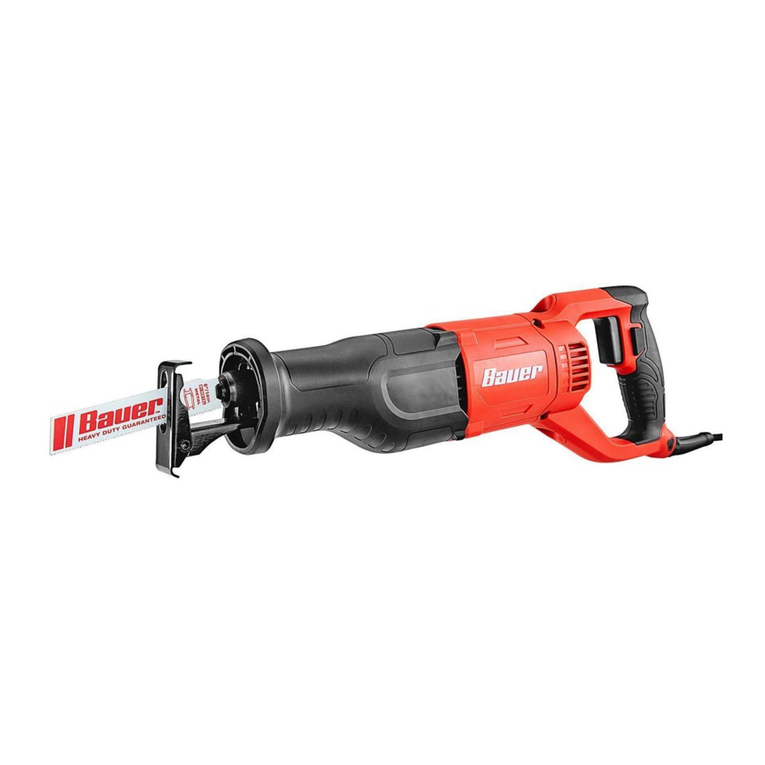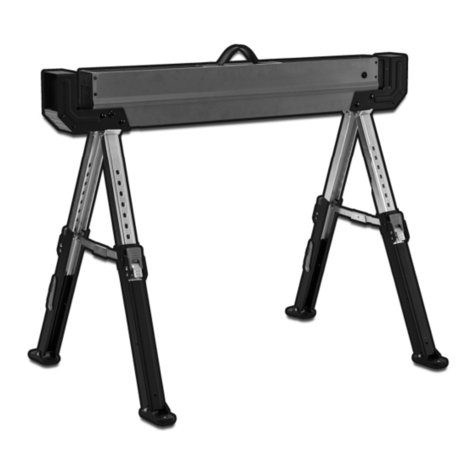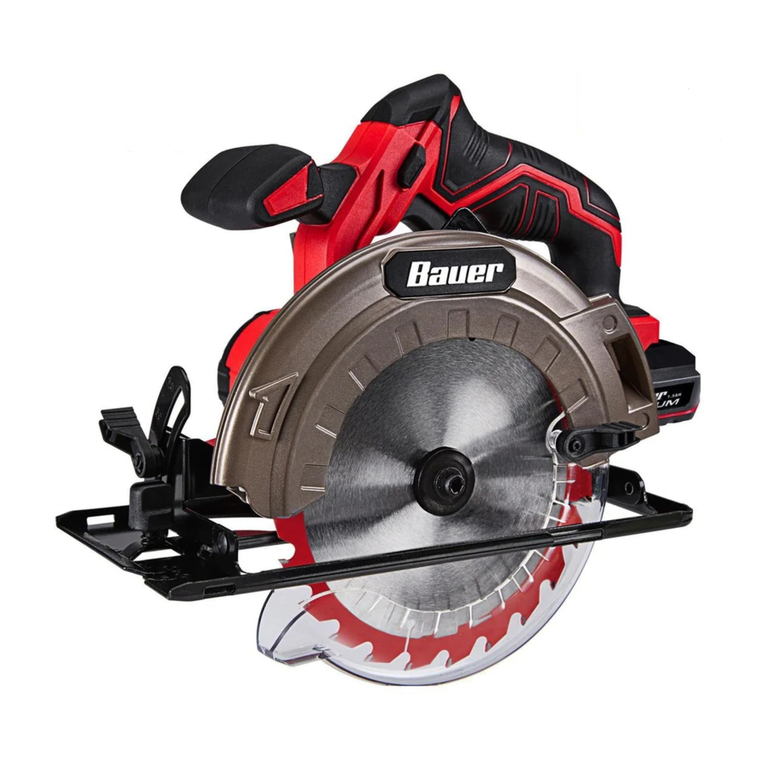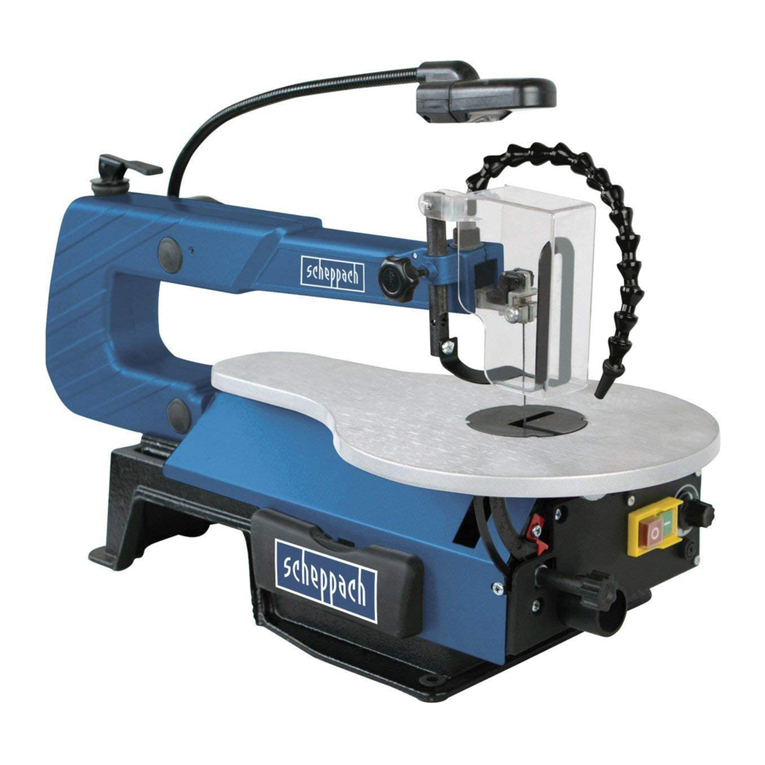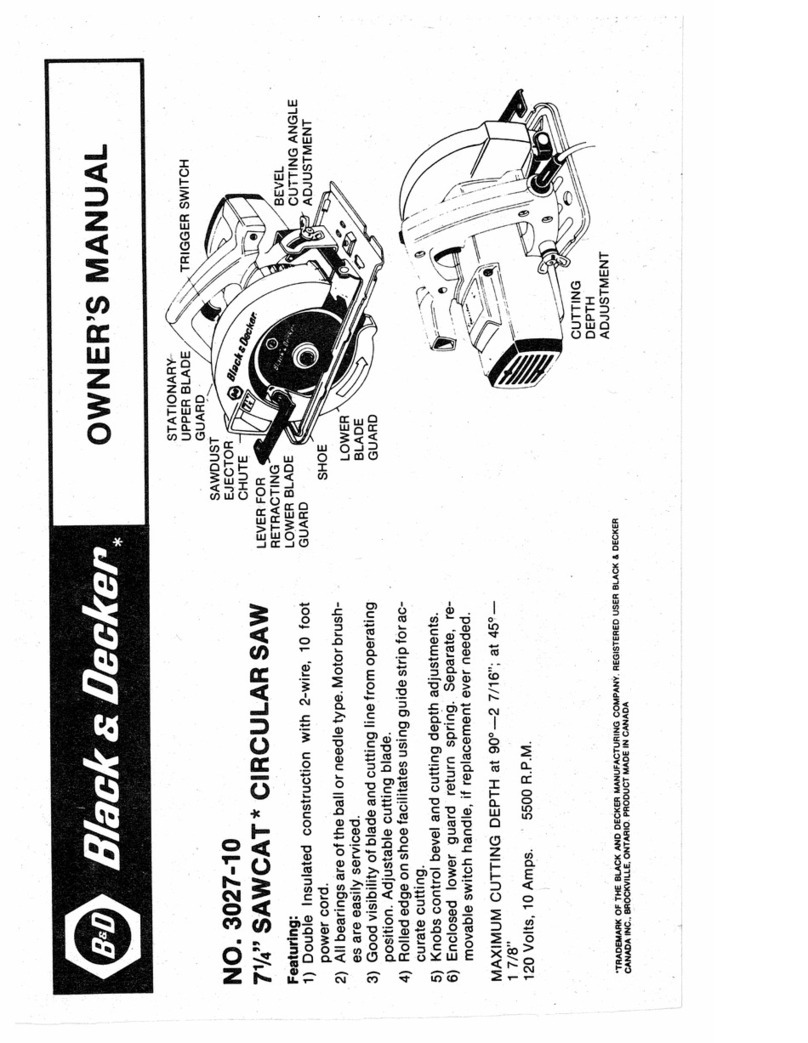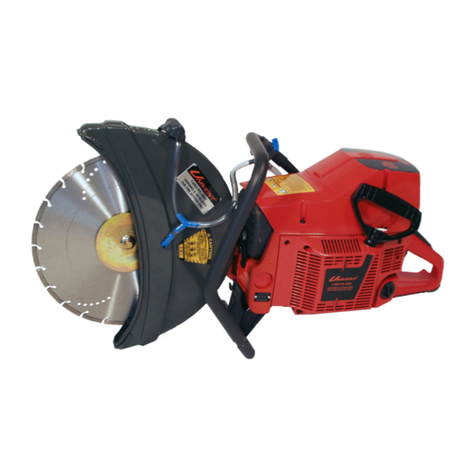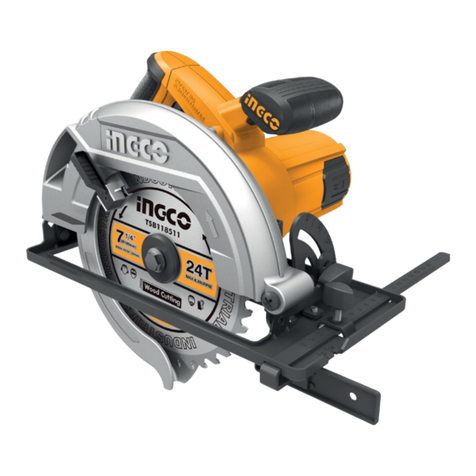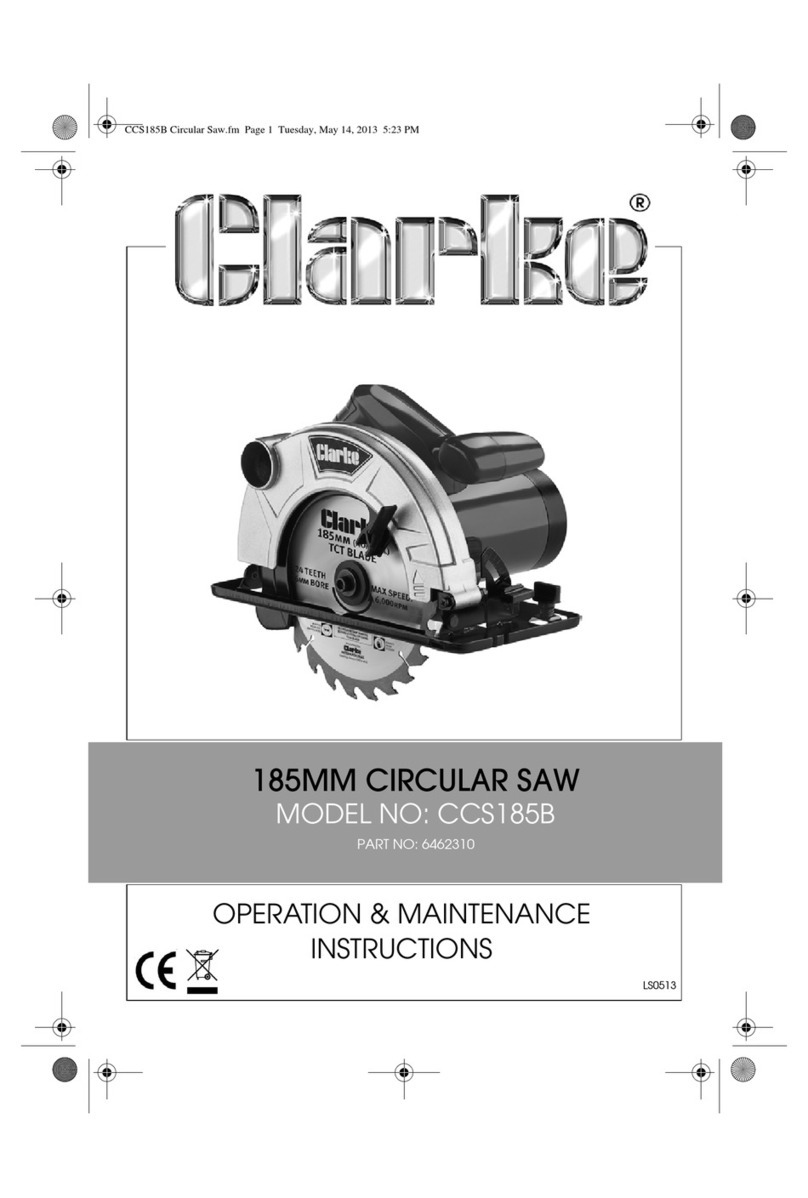
Page 4 For technical questions, please call 1-888-866-5797. Item 64290
Power tool use and care
1. Do not force the power tool. Use the
correct power tool for your application.
The correct power tool will do the job better and
safer at the rate for which it was designed.
2. Do not use the power tool if the
switch does not turn it on and off.
Any power tool that cannot be controlled with
the switch is dangerous and must be repaired.
3. Disconnect the plug from the power source
before making any adjustments, changing
accessories, or storing power tools.
Such preventive safety measures reduce the
risk of starting the power tool accidentally.
4. Store idle power tools out of the reach of
children and do not allow persons unfamiliar
with the power tool or these instructions
to operate the power tool. Power tools are
dangerous in the hands of untrained users.
5. Maintain power tools. Check for misalignment
or binding of moving parts, breakage of parts
and any other condition that may affect the
power tool’s operation. If damaged, have the
power tool repaired before use. Many accidents
are caused by poorly maintained power tools.
6. Keep cutting tools sharp and clean. Properly
maintained cutting tools with sharp cutting edges
are less likely to bind and are easier to control.
7. Use the power tool, accessories and tool bits
etc. in accordance with these instructions,
taking into account the working conditions
and the work to be performed. Use of the
power tool for operations different from those
intended could result in a hazardous situation.
Service
Have your power tool serviced by a
qualified repair person using only identical
replacement parts. This will ensure that the
safety of the power tool is maintained.
Jigsaw Safety Warnings
1. Hold power tool by insulated gripping surfaces
when performing an operation where cutting
tool may contact hidden wiring or its own cord.
Contact with a ″live″ wire will make exposed metal
parts of the tool ″live″ and shock the operator.
2. Use clamps or another practical way to secure
and support the work piece to a stable platform.
Holding the work by hand or against your body
leaves it unstable and may lead to loss of control.
3. Maintain labels and nameplates on the tool.
These carry important safety information.
If unreadable or missing, contact
Harbor Freight Tools for a replacement.
4. Avoid unintentional starting.
Prepare to begin work before turning on the tool.
5. Do not lay the tool down until it has come to
a complete stop. Moving parts can grab the
surface and pull the tool out of your control.
6. When using a handheld power tool,
maintain a firm grip on the tool with both
hands to resist starting torque.
7. Do not depress the spindle lock when
starting or during operation.
8. Do not leave the tool unattended when it is plugged
into an electrical outlet. Turn off the tool, and
unplug it from its electrical outlet before leaving.
9. This product is not a toy.
Keep it out of reach of children.
10. People with pacemakers should consult their
physician(s) before use. Electromagnetic fields in
close proximity to heart pacemaker could cause
pacemaker interference or pacemaker failure. In
addition, people with pacemakers should:
• Avoid operating alone.
• Do not use with power switch locked on.
• Properly maintain and inspect to avoid
electrical shock.
• Any power cord must be properly
grounded. Ground Fault Circuit Interrupter
(GFCI) should also be implemented –
it prevents sustained electrical shock.
11. The warnings, precautions, and instructions
discussed in this instruction manual cannot
cover all possible conditions and situations
that may occur. It must be understood by the
operator that common sense and caution are
factors which cannot be built into this product,
but must be supplied by the operator.
SAFETY OPERATION MAINTENANCESETUP
